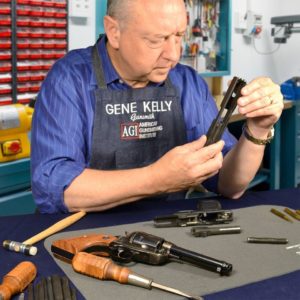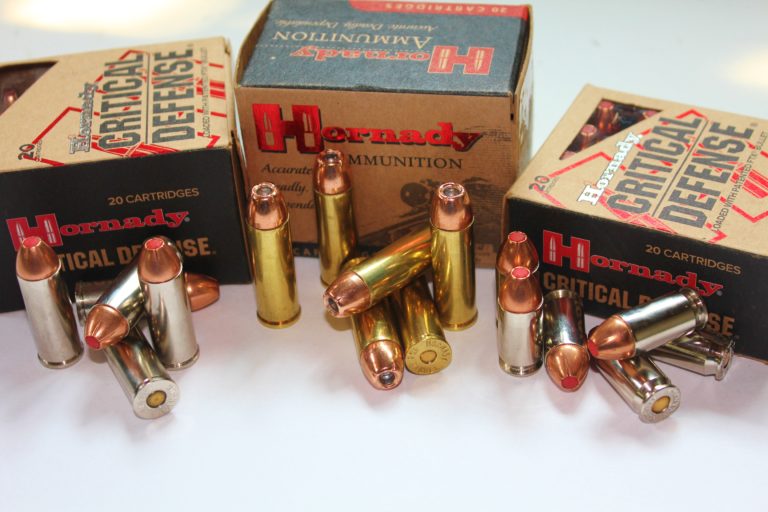October 14, 2021
By Gene Kelly, Founder and CEO of American Gunsmithing Institute
Gunsmithing can be a satisfying hobby, but it can also become very profitable if you keep in mind these key strategies for operating a business. Here are the things every prosperous gunsmith has done.Octo
1. Know what you want to get from the business.
The key to success in any business venture is knowing exactly what you want to get out of it. While that sounds really simple, it isn’t. Most people have only a vague idea of what they want to accomplish when they start on their own, and gunsmiths are no different. They know they want to be their own boss, they want to enjoy their workday, they want to work with clients who share their passion and they want to make money. But, beyond that, they probably haven’t written down actual goals, like the amount of money they want to generate by the business, both gross and net, much less converting that to the number of sales, repairs, services, etc. they need to do each month to cover the expenses and put a nice profit in their pocket. Some just want to have extra income during retirement or learn gunsmithing as a hobby. No matter what your reason, setting some simple and basic goals to start will be helpful. Don’t overcomplicate things, keep your goals high level.


2. Know your operating costs, determine, and maintain adequate profit margins to meet your goals.
Most gunsmiths fail simply because they don’t charge what they need to cover overhead and still make a significant profit. They seem to be afraid to charge what their knowledge and skills are really worth. They often price a job low, because that is what the starving gunsmith down the road is charging and he has been charging that for 20 years, or, “This gun is only worth X, so I can only charge Y.” Wrong!!! The market will bear more than you think. People have a lot of money invested in their firearms and will spend money to maintain them.
You will need to know your overhead, such as tools, equipment, and salary (yes, you need to pay yourself) and general monthly costs such as rent, utilities, and advertising for the month. Let’s just say you’ve done the calculations and determined your overhead is $1,000.
Next, divide that by the number of hours you will be doing paid work. So a typical work month (40 hours per week, 4 1/3 weeks) averages 176 hours per month. This is assuming you are going to be 100-percent productive, and we all know that no one ever is. So you need to adjust that number by a performance factor. Take for example, if you were only able to bill 50 percent of your time, that would be 88 hours a month if you are working full time. So take your total overhead ($1,000 in this example) and divide it by 88. Bingo! You now have your per billing hour overhead cost (in this example $11.36 an hour).
Now, take what you want to make in net profit each month (let’s say $5,000) and divide that by 88 (using the same 50-percent billable hours figure) and you will end up with your second number, $56.81. Add them together and you get the minimum hourly rate you need to charge to meet your profit goal (in this case $68.17 an hour). Does that seem like a little or a lot to you? It may surprise you that you can actually charge less than that per hour and make more net profit if you become more efficient and we will show you how.

3. Market your gunsmithing services.
While it would be wonderful, the truth is when you open your doors as a gunsmith (or any other business) the whole world will not suddenly come running to your door to have their guns repaired. How can they if they don’t know you are offering gunsmithing services? It never fails to amaze me that some gunsmiths think they don’t have to do any advertising at all to be successful.
Just because you’re open for business doesn’t mean shooters are going to beat a path to your door with work. You are going to need to market your services.
However, a big advantage for gunsmiths is that you can spend a lot less on advertising than most other businesses because of the huge demand and the lack of qualified gunsmiths. But you have to be smart and let them know you are there, open for business, and qualified to repair or customize their firearms. Here are four simple and extremely low-cost ways to get a ton of business:
- Have a simple but effective website, with the five key components covered. (AGI has a turn-key system that can help with that, too.)
- Create a simple but effective social media presence. Learn how to boost your posts to gain followers and attract customers.
- Business Cards, hand them out everywhere and post them letting people know you are an AGI-Certified Gunsmith.
- Post and mail a simple brochure (AGI can help you by providing you with a standardized brochure) to gun shops, pawn shops, ranges, gun clubs and take them to hand out at gun shows. Everybody needs a good gunsmith—people share news about them faster than hot stock tips.
Just these four simple things can generate a lot of work. There are even more powerful methods in our success courses. You also need to know how to sell your work and services. While you may hate selling it’s not a dirty word. It just means knowing how to best help your customers make a good decision. If you are honest and want to actually help your customers, then you need to know how to do real selling.
4. Know how to rapidly do repairs and customizing work.
I won’t spend a lot of time on this point, as it is what the American Gunsmithing Institute is all about. In brief, you must be able to understand the firearm design, quickly analyze the problem and then make the proper repair. That’s what you learn if you take AGI’s Professional Design, Function and Repair Gunsmithing Course. If you haven’t watched the Professional Course Introductory video lesson, then go to American Gunsmithing Institute for complete details.
Becoming an AGI certified gunsmith will give you the confidence to work effectively and efficiently on most firearms. Our courses are yours forever and upon completion, become an invaluable reference library for you to refer to over and over. AGI also has Armorer’s Courses and other information that will keep you up to date with any firearm. Continuous learning is going to be an important part of your business to stay relevant and current.
Another way to become better at your craft is by joining our continuous learning club, the Gunsmithing Club of America (GCA) which puts you in touch with others who are in the trade. The Gunsmithing Club of America is a community of like-minded individuals who want access to trustworthy gunsmithing information, and desire to share their knowledge with others.
GCA is a place where you can learn about the design, function, and repair of both modern and historical firearms and how to do real-world Gunsmithing. You can also learn how others work with customers, build their business, and develop professionally.
Our staff, instructors, and many of our members are true experts in their fields and are willing to openly share their skills and experience with other members of all levels, through instructional videos, publications, forums and messaging, and live meetings.
If you want to continuously learn more about firearms and gunsmithing, GCA membership should be considered mandatory.
5. Understand the lifetime value of a satisfied customer.
Acquiring new customers takes time and some expense. A satisfied existing customer will bring you business for many years and at very little cost in marketing. Again, let’s do some simple math. Let’s say a customer’s gunsmithing job is $100. He is happy with the work you did, but you only did that one job and never see him again. That customer was worth only $100. But most gun owners own a lot of guns, so what if you kept in contact with that same customer and he did $100 worth of business with you twice a year for 20 years. The lifetime value of that customer would now be $4,000!
Now, what if you could increase the transaction size (dollar amount) of each job and do work for them more often? That same customer could now easily have a lifetime value of more than $10,000. How many of those customers would you need to meet your financial goals?

6. Extract maximum benefits from the business, “tax free!”
I am like most people and really hate to pay taxes. But, I do. However, I first take every legal deduction I can so I pay less. You probably could too, by legally deducting many of the expenses you are already spending your hard-earned money on, such as your truck or car, phones, computers, guns, ammo, range fees and memberships, travel, meals, rent, tools and many other items—as long as they become legitimate business expenses. As a part-time or full-time gunsmith, many of these items do become write-offs and business deductions. You will need to check with your personal tax advisor and everyone’s situation is different and this is not legal advice. But in an audio interview with a CPA and tax specialist we talk about “Tax Secrets That They Don’t Want You to Know About.”
7. Leverage your time and resources.
OK, so how can you make more money per hour? Well, I have a number of proven answers to this question and I am only going to share a couple of them with you here. First of all you can charge a “flat rate” per job and get faster at the work itself. (AGI developed an exclusive Gunsmith’s Flat Rate Manual showing you what to charge per type of job included with the Master Gunsmithing Course.) Second, you can batch your work, doing similar jobs at the same time—bluing, trigger jobs, bedding, etc. You organize your time and tools and therefore get more done faster. Another biggie is knowing which jobs not to take. Trust me, knowing how to make this decision properly will keep you from investing time into a no win project!
Other ways of increasing your income and leveraging your time include having other gunsmiths work for you on a percentage basis. You can also specialize in customizing certain types of guns—getting higher dollars for those projects—and you can implement simple processes that maximize your efficiency. Combine a dozen other methods, and this can result in huge income growth with more freedom.
Hopefully this information helps you realize there is more to being a successful gunsmith than just knowing how to turn a screwdriver. It isn’t really complicated if you know what to do. AGI and GCA are great resources and we have over 25 years of experience helping people start and thrive in gunsmithing.
There is a real need for qualified gunsmiths, and I wish you the very best if you choose to get involved in this exciting profession.


